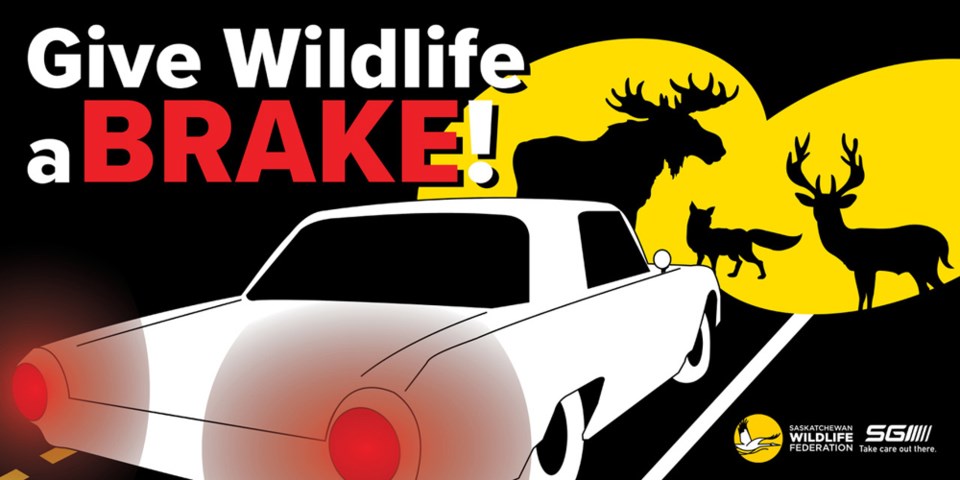In 2017, over 14,000 vehicular collisions with wildlife were reported to an estimated cost of $76.9 million, according to Saskatchewan Government Insurance (SGI).
This is why the Saskatchewan Wildlife Federation (SWF), with financial support from SGI have launched the “Give Wildlife a Brake” campaign to educate people on what to do when encountering wildlife on Saskatchewan highways.
“Motorists need to be vigilant and take precautions by slowing down when seeing animals near the road as they may dart out in front of you at any time” says Darrell Crabbe, Executive Director of the Saskatchewan Wildlife Federation in a campaign press release. “Night time is especially risky as animals are much more mobile at night and are obviously harder to see. In some cases, a vehicle’s headlights will illuminate their eyes providing a warning of their presence” he added.
While animals are more active in May and June when animals are drawn to salt on the roads and trying to escape insects, and fall during mating season, according to the SGI wildlife collisions page, motorists should always be on alert and keep their eyes on the road.
“No matter the season or time of day, it’s important to watch for signs of wildlife and reduce your speed accordingly. Slowing down reduces the distance required to stop and decreases the force of impact in the event of a collision,” says the website page.
When encountering an animal, try to do the following:
• Remain calm if an animal appears on the road in front of you. If you have time to stop, do so at a safe distance and stay alert. When 1 animal crosses the road, others often follow. You can also sound your horn to scare wildlife away from the road.
When a collision is unavoidable:
• Sometimes collisions with wildlife are unavoidable even if you take every precaution and remain alert at the wheel. In these circumstances, try to remain calm.
• Aim your vehicle at the spot where the animal came from, not where it’s going.
• Try for a glancing blow rather than a head-on encounter and let up on your brake just before you collide. This causes the front of your vehiclew to rise slightly and reduces the chances of the animal going through your windshield.
• Hitting an animal can be an extremely traumatic experience. If possible, move to the shoulder and turn on your hazard lights. Take a moment to regain your composure and then assess the damage to your vehicle.
• Do not approach the animal, especially if it appears to be wounded. Injured animals can be extremely dangerous.
• Call the police or your local RCMP detachment if there are human injuries or significant damage to your vehicle. If the damage is less severe, you may continue driving and follow regular SGI claims reporting procedures.
For more information visit www.sgi.sk.ca/wildlife-collisions




